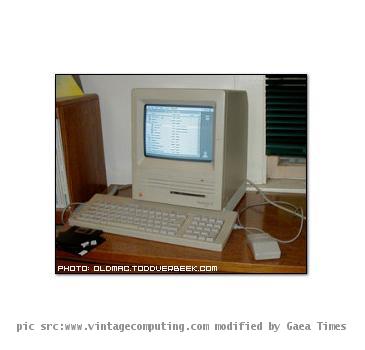How to Turn an Old Computer into Web server
By Partho, Gaea News NetworkTuesday, April 20, 2010
What could be the best use of your old computer? Before it is rendered completely dysfunctional, you can turn it into a file server, game server, arcade console or anything for your use. But, what about a turning your old computer into a web server to run your own blog from home, or host big files on your website for download. What you would require is an old computer, network cables and download some free software. Well, you must have upgraded to new machines, stacking up the old machines that are of no good. You can also build a firewall and connect to FreeDNS. FreeDNS offers a solution to the ever-changing dynamic IP. Let’s see how you can build a web server from old computer.
Step 1
Does your system have 64MB of RAM, an intel or AMD processor, a cd-rom drive and not less then 600MB of space? If yes, go on you have the keys.
Step 2
For the operating system you can use Ubuntu Server Edition 8.04. Similar results can also be achieved from the desktop edition. However, the GUI can take up a lot of memory and processing power. Download the CD image of Ubuntu Server edition form the link and select a mirror to burn it.
Step 3
You need to ensure that your computer is hooked up to a router and has live Internet connection during this install. It will automatically detect and configure your network settings. All that you need to do is boot from CD in BIOS.
Step 4
Now that Ubuntu Server doesn’t have a GUI (graphical user interface), everything is text-based. In order to gain full control over what goes on in your server, install Webmin (a web-based GUI). After you log in with your username and password input the following command
sudo apt-get install perl libnet-ssleay-perl openssl
Step 5
Now its time for port forwarding. In order to access your website from anywhere, let Internet open up your router’s homepage by typing in the router’s IP address(default is 192.168.1.1) log in with user the username and password.
Step 6
Get a free domain name for your server. Already your server IP address is your website, you won’t like to keep remembering it. To create a good free domain site you can look here, they use their Internet IP as a domain name. Make a new account and follow the on-screen instructions. It is really easy to set up.
Step 7
Enter the domain name into your browser and see if it works. If it doesn’t work use the server’s IP address. In case it doesn’t work you must have done something wrong with port forwarding.
Step 8
Go your server once again and execute these commands: sudo chown yourusername:www-data /var/www sudo chmod 775 /var/www you have just changed the folder /var/www and permissions /var/www is the root folder of your website.
This is the best way to configure an old computer to turn it into a webserver.
Add a firewall/router
You might think, does it make a sense to have a firewall at home. However you need to know there are countless advantages of having a firewall. You can run Squid Proxy and have a catching proxy at your house which could increase your web speed significantly. Moreover you can create different profiles with passwords to use the web. This will help you to keep away your children’s from sites for adults. Firewalls such as PFsense, m0n0wall or Smoothwall are free and they perform various functions. When you run a web server inside your home network, you can use the firewall to route (or NAT) the connection from the outside world to your server and vice-versa. We have some of the best are available here firewalls listed here.
Pfsense Installing PFSense
M0n0wall M0n0wall – PC Platform Quick Start Guide
Smoothwall Smoothwall Gateway Installation
Tags: Firewall, freeDNS, Ubuntu, Ubuntu server edition, Web Server
|
April 21, 2010: 5:26 am
This is good information, but what about security web server, but information is very useful. Thanks |

KK